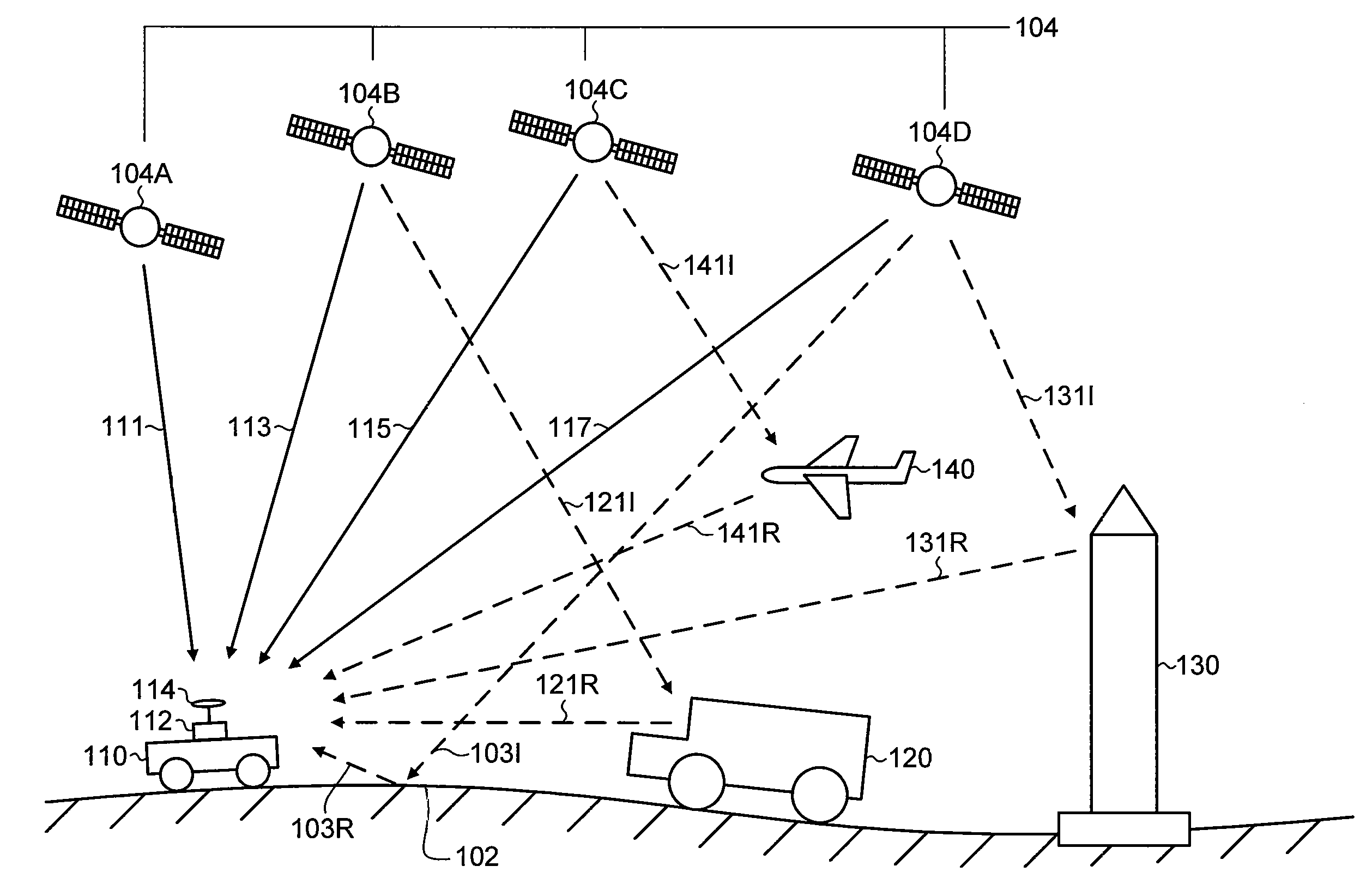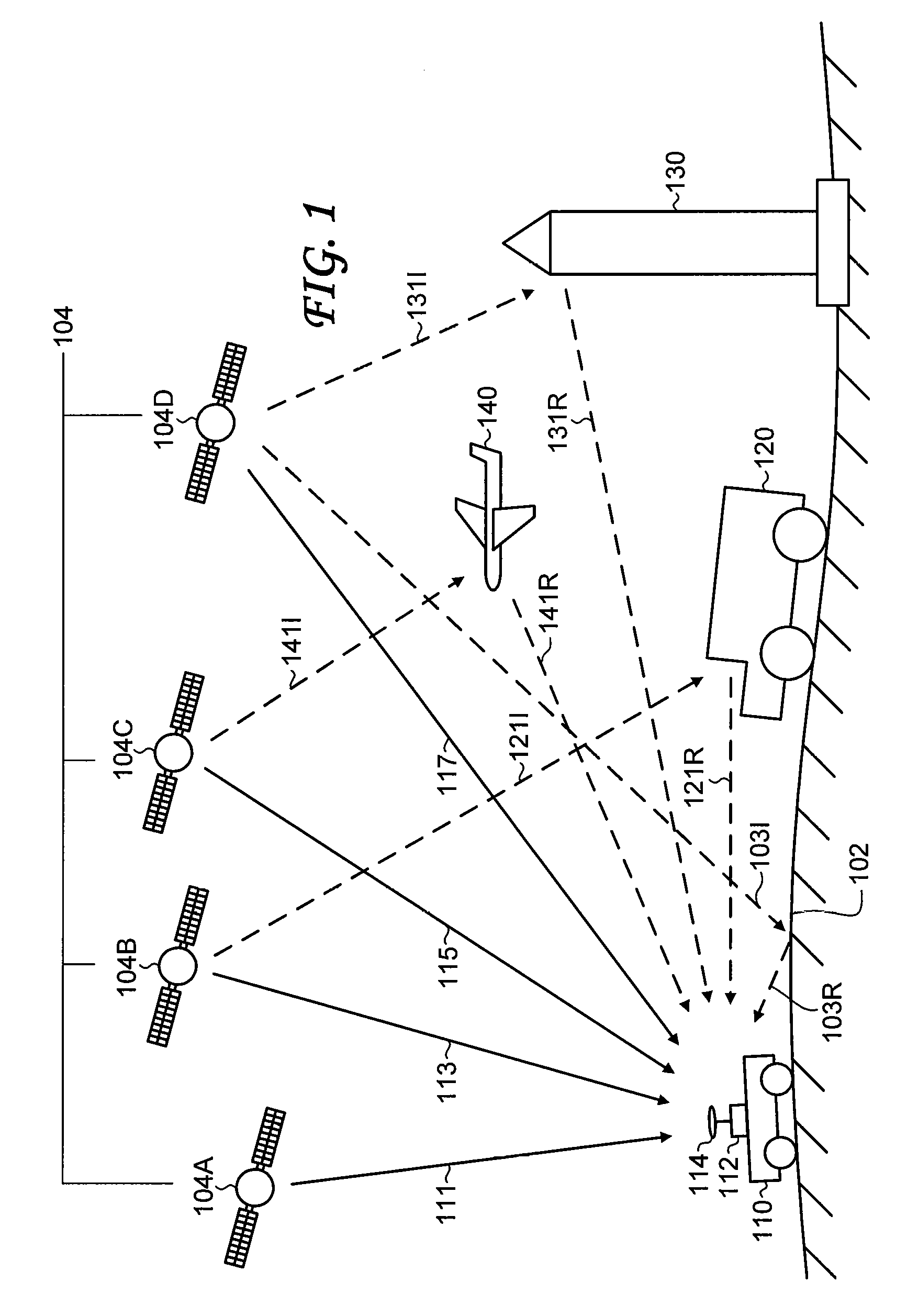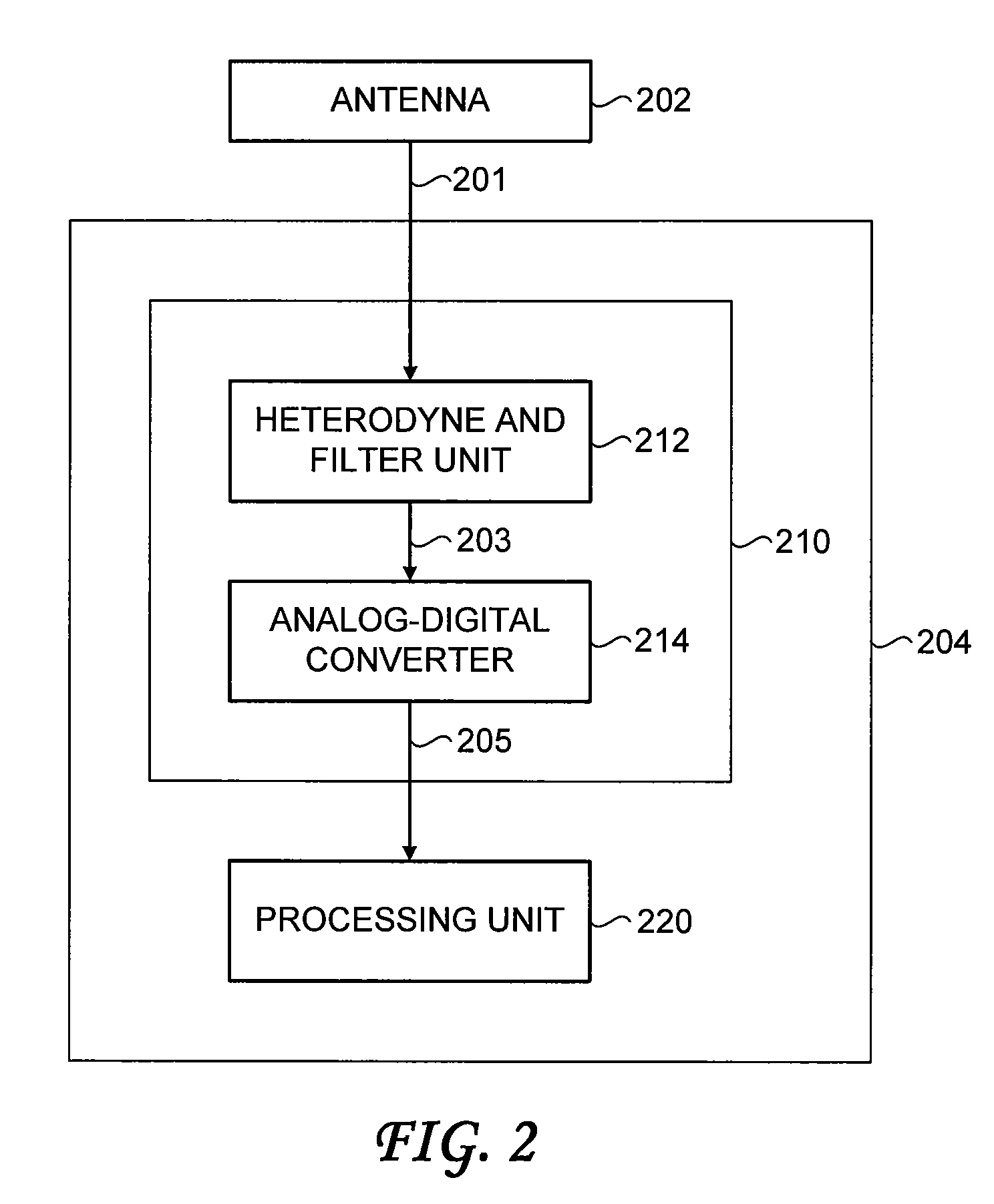Object Detection and Position Determination by Reflected Global Navigation Satellite System Signals
a global navigation satellite and signal technology, applied in the field of object detection and position determination, can solve the problems of affecting the accuracy of the code coordinates determined by the navigation receiver, and not taking into account the reflection of the general environmen
- Summary
- Abstract
- Description
- Claims
- Application Information
AI Technical Summary
Benefits of technology
Problems solved by technology
Method used
Image
Examples
Embodiment Construction
[0022]FIG. 1 shows a high-level schematic of a general signal reception environment. A constellation of global navigation satellites 104 transmits navigation signals. Shown are four representative navigation satellites, denoted navigation satellite 104A, navigation satellite 104B, navigation satellite 104C, and navigation satellite 104D. A navigation receiver 112 is outfitted with an antenna 114. The antenna 114 receives the direct navigation signal 111 from the navigation satellite 104A, the direct navigation signal 113 from the navigation satellite 104B, the direct navigation signal 115 from the navigation satellite 104C, and the direct navigation signal 117 from the navigation satellite 104D.
[0023]The navigation receiver 112 and the antenna 114 are mounted on a vehicle 110 travelling along an environmental surface 102. In the example shown in FIG. 1, the vehicle 110 is a land vehicle, such as a car or construction vehicle, and the environmental surface 102 is a ground surface. In...
PUM
 Login to View More
Login to View More Abstract
Description
Claims
Application Information
 Login to View More
Login to View More - R&D
- Intellectual Property
- Life Sciences
- Materials
- Tech Scout
- Unparalleled Data Quality
- Higher Quality Content
- 60% Fewer Hallucinations
Browse by: Latest US Patents, China's latest patents, Technical Efficacy Thesaurus, Application Domain, Technology Topic, Popular Technical Reports.
© 2025 PatSnap. All rights reserved.Legal|Privacy policy|Modern Slavery Act Transparency Statement|Sitemap|About US| Contact US: help@patsnap.com



